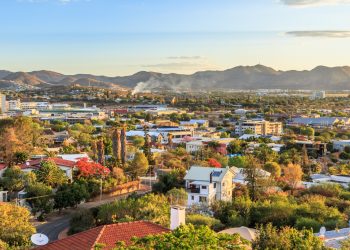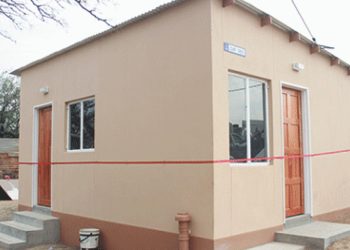
Namibia could miss its goal of delivering 20,000 housing units by the end of 2025 with only 29% having been completed to date and two years remaining, a new report has revealed.
The country’s housing target is part of the Harambee Prosperity Plan.
According to Angelique Bock, Economic Researcher at Simonis Storm Securities, it appears increasingly unlikely that the 20,000 target will be met due to the slow pace of construction by the National Housing Enterprise (NHE).
Based on latest data, Bock notes that only 29% of the 20,000 housing units’ goal has been achieved, and the deadline is just two years away, as indicated in the Harambee Prosperity Plan.
The development has raised concerns about the government’s ability to fulfill its commitment to addressing the country’s housing crisis effectively.
“The current progress in the construction of housing units is far below the required pace to achieve the 20,000-unit target by 2025. This shortfall could have significant economic and social implications, as it hampers the government’s efforts to provide affordable housing to Namibians,” Bock said.
According to the Harambee plan, the total cost of this endeavour was estimated at N$3.5 billion, with the Ministry of Urban and Rural Development being the responsible entity for its execution.
NHE is a key stakeholder responsible for delivering these housing units, alongside other public and private sector partners, including the Government Institutions Pension Fund (GIPF), Shack Dwellers Federation of Namibia, Ongos Valley, Regional Councils, Local Authorities, and other private sector developers.
NHE Manager of Corporate Communications & Marketing, Mutonga Matali says the company has invested over N$185 million in housing projects over the past two years which has resulted in the development of more than 735 housing units.
“The Enterprise has continued to prioritise the delivery of housing units and currently, we have five projects running in Gobabis, Okahao, Windhoek (Informal Settlement Upgrading Program), Tsandi and Ondangwa, while more projects are planned in other towns across the country,” he said.
Shack Dwellers Federation of Namibia, Information Officer at the Namibia Housing Action Group, Hendrina Shuunyuni stated the Federation has constructed 818 houses from 2021 to date valued at N$32 million.
This comes as the plan outlined a specific breakdown of the housing delivery goal of an annual of 5,000 Units from 2021 to 2025 financial years.
Shuunyuni noted that the provision of housing is attainable provided more funding is made available.
She added that one notable aspect affecting housing costs is the geographical location as Inland areas, where construction costs are reduced by producing their own bricks, have an average cost of N$40,000 per housing unit.
On the other hand, coastal areas, where bricks need to be purchased due to soil and weather conditions, have a higher cost of about N$55,000 per unit.
Thus, she expressed that land and housing are very expensive, and not affordable for most.Â
“Limited funding to service land and increasing costs of building materials, bureaucracy, poor contractors, poor quality work, and corruption are to blame for the negative influence on the housing market and housing affordability,” she said
To address these issues, Shuunyuni proposed, “more funding should be made available, housing policies should be reviewed, and systems and processes that are slowing down housing delivery need to be changed.”Â
In the midst of these challenges, the Ongos Valley Development has invested N$900 million in its housing project’s first phase in Windhoek.
The development’s phase 1 includes over 4,500 housing units and related infrastructure valued at N$4.3 billion.Â
The Association of Local Authorities in Namibia, notes that the country urgently needs approximately 50,000 housing units to be constructed nationwide in the next 10 years to address the housing crisis.
Â
Â











